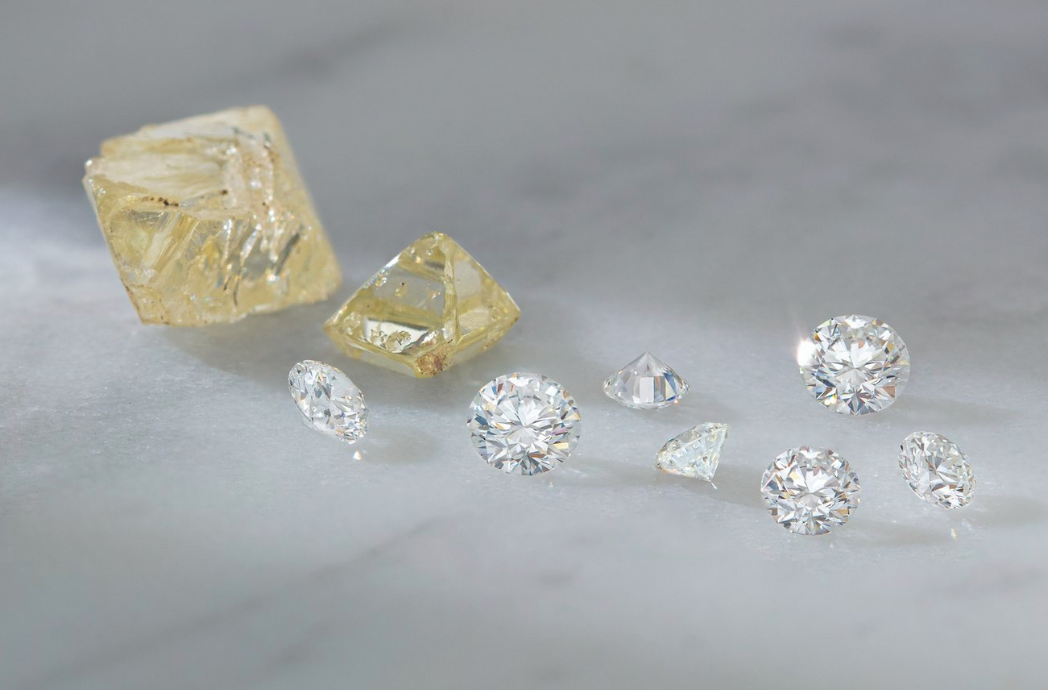Lab-grown diamonds, also known as synthetic or man-made diamonds, have emerged as a revolutionary alternative to traditional mined diamonds. These diamonds are virtually identical to their natural counterparts in terms of physical properties, appearance, and chemical composition. However, they are produced in a controlled laboratory environment, offering a more sustainable and ethical choice for consumers. In this article, we will explore what lab-grown diamonds are, how they are made, their benefits, and why they are becoming increasingly popular in the jewelry industry.
What Are Lab-Grown Diamonds?
Lab-grown diamonds are diamonds that are created through technological processes that mimic the natural conditions under which diamonds form in the Earth’s crust. Unlike mined diamonds, which take millions of years to form, lab-grown diamonds can be produced in a matter of weeks or months. The two most common methods used to create lab-grown diamonds are the High Pressure High Temperature (HPHT) method and the Chemical Vapor Deposition (CVD) method.
High Pressure High Temperature (HPHT) Method
The HPHT method replicates the extreme pressure and temperature conditions that occur deep within the Earth’s mantle, where natural diamonds form. A small diamond seed is placed in a chamber with carbon, and the pressure and temperature are gradually increased until the carbon atoms bond to the seed, creating a larger diamond crystal.
Chemical Vapor Deposition (CVD) Method
The CVD method involves placing a diamond seed in a vacuum chamber and introducing a gas mixture, typically methane, and hydrogen. The gases are heated, causing them to break down and release carbon atoms. These carbon atoms then bond to the diamond seed, lab grown diamonds, forming layers of diamond material that gradually build up.
The Benefits of Lab-Grown Diamonds
1. Sustainability and Environmental Impact
One of the most significant advantages of lab-grown diamonds is their minimal environmental impact. Traditional diamond mining requires the excavation of large amounts of earth, leading to deforestation, habitat destruction, and pollution. In contrast, lab-grown diamonds are produced with a fraction of the environmental cost. This makes them an excellent choice for environmentally-conscious consumers who want to reduce their carbon footprint.
2. Ethical Sourcing
Lab-grown diamonds are free from the ethical concerns associated with diamond mining, such as child labor, exploitation, and funding of armed conflicts. By choosing a lab-grown diamond, consumers can be confident that their purchase supports fair labor practices and does not contribute to unethical activities.
3. Cost-Effective
Lab-grown diamonds are typically more affordable than natural diamonds. Since they are produced in a laboratory setting, they do not require the same extensive mining processes and associated costs. As a result, consumers can enjoy a larger, higher-quality diamond for the same price as a smaller, lower-quality natural diamond.
4. Identical to Natural Diamonds
Despite being lab-grown, these diamonds are chemically and physically identical to natural diamonds. They have the same hardness, brilliance, and optical properties, making them virtually indistinguishable from mined diamonds to the naked eye. In fact, only specialized gemological equipment can differentiate between the two.
Why Are Lab-Grown Diamonds Gaining Popularity?
1. Growing Demand for Sustainable Products
As more consumers become aware of the environmental and ethical issues surrounding diamond mining, there is an increasing demand for sustainable alternatives. Lab-grown diamonds offer a solution that meets this demand, providing consumers with a guilt-free option for purchasing fine jewelry.
2. Celebrity Influence and Industry Trends
Several high-profile celebrities and influencers have publicly endorsed lab-grown diamonds, helping to raise awareness and normalize their use in fine jewelry. The increasing acceptance of lab-grown diamonds in the fashion and entertainment industries has contributed to their growing popularity among consumers.
3. Advancements in Technology
The continued development of diamond-growing technology has made it possible to create high-quality diamonds that are virtually indistinguishable from natural diamonds. As the technology improves, lab-grown diamonds are becoming more accessible, and their production costs continue to decrease, further driving their popularity.
Lab-Grown Diamonds vs. Mined Diamonds: Key Differences
While lab-grown diamonds and mined diamonds share many similarities, there are a few key differences between them that consumers should consider.
1. Origin
The primary difference between the two types of diamonds lies in their origin. Mined diamonds are formed naturally over millions of years deep within the Earth’s crust, while lab grown diamonds are created in a laboratory setting using advanced technology.
2. Price
Lab-grown diamonds are generally more affordable than their mined counterparts. This is due to the lower cost of production, which eliminates the need for large-scale mining operations and the associated environmental and labor costs.
3. Rarity
Natural diamonds are considered rare because of the long and complex process involved in their formation. Lab-grown diamonds, on the other hand, can be produced in large quantities and are not subject to the same rarity factors.
4. Resale Value
Traditionally, natural diamonds have been seen as a store of value, with some holding or even increasing in value over time. Lab-grown diamonds, however, do not have the same resale value, as they are considered less rare and less desirable in the market. This is an important consideration for consumers who view their diamonds as long-term investments.
Conclusion: The Future of Lab-Grown Diamonds
Lab-grown diamonds are reshaping the jewelry industry by offering a more sustainable, ethical, and affordable alternative to traditional mined diamonds. As technology continues to advance, these diamonds are becoming even more accessible to consumers who want to make a positive impact without compromising on quality or beauty. Whether you are looking for an engagement ring, a necklace, or other fine jewelry, lab-grown diamonds provide a compelling option that aligns with modern values of sustainability and ethical sourcing.
As more consumers and jewelers embrace the benefits of lab-grown diamonds, it is clear that they are not just a passing trend but a long-term solution to the challenges of traditional diamond mining. With their lower environmental impact, ethical production, and competitive pricing, lab-grown diamonds are here to stay.


